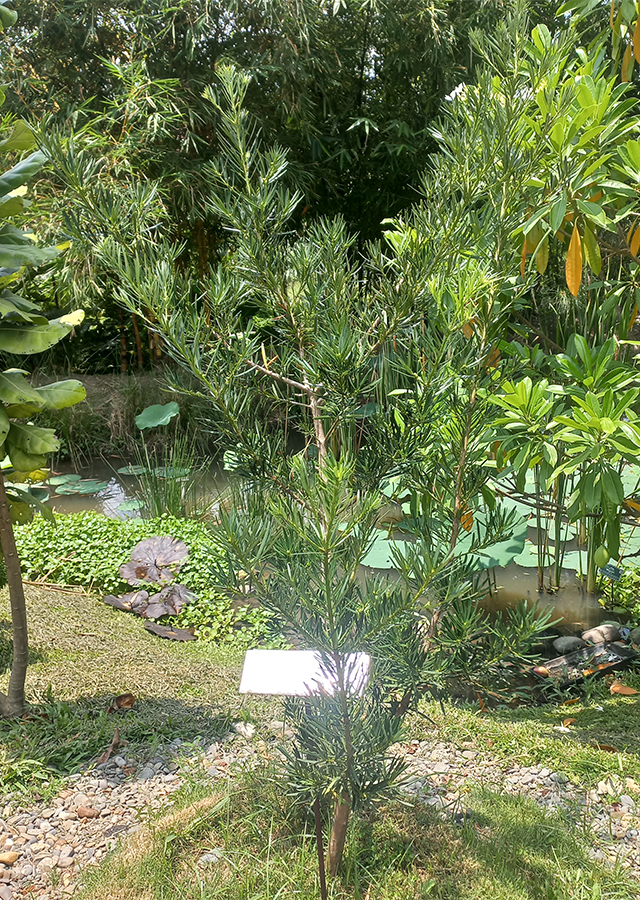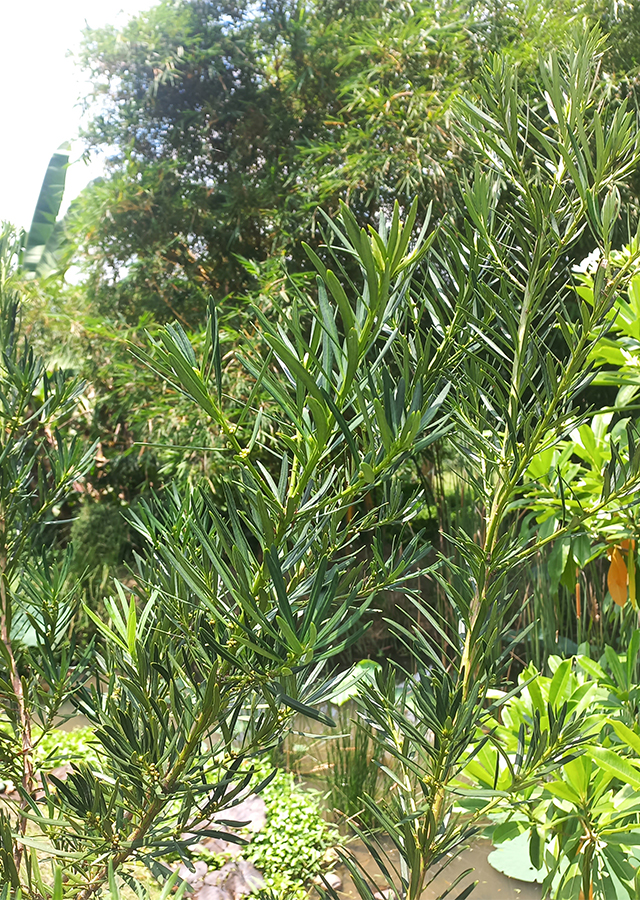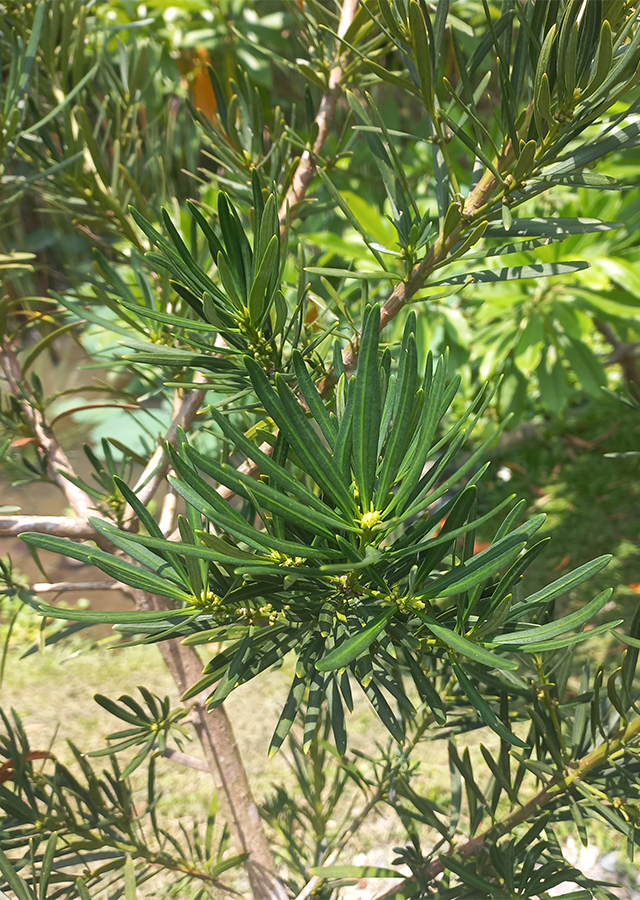Buddhist Pine
Podocarpus macrophyllus (Thunb.) Sweet
Podocarpaceae
Location in our garden
Principal



Synonym
Margbensonia macrophylla (Thunb.) A.V.Bobrov & Melikyan
Nageia macrophylla (Thunb.) F.Muell.
Podocarpus sweetii C.Presl
Habitus
Trees. An evergreen shrub or tree that may grow up to 20 m high
Part Used
Leaves
Bark
Growing Requirements
Full Sunshine
Need Shade
Drought Resistant
Low Temperature
Habitat
Forest
Mountains
Roadside
Overview
Buddhist pine is a plant from the Podocarpaceae family originating from China (Anhui, Chongqing, Fujian, Guangxi, Guizhou, Hong Kong, Hubei, Hunan, Jiangsu, Jiangxi, Sichuan, Yunnan, Zhejiang), Japan, Myanmar, and Taiwan. This plant is very popular and is often grown as an ornamental (especially in Japan and the southeastern United States) and a hedge plant. This species has a very unique and antique tree shape and its ability to survive in all climates, which makes this plant much sought after by ornamental plant lovers from various countries, and is also widely cultivated as a bonsai plant. Apart from being an ornamental plant and a hedge plant, Buddhist pine can also be used as a food ingredient, a source of material, and medicine. The wood is also widely used in the manufacture of furniture, tools, paper, and agricultural equipment. In addition, Buddhist pine is also considered a feng shui tree in Japan.
Vernacular Names
Luo han song (Chinese), Inumaki (Japanese).
Agroecology
Found growing in forests, open scrub, and roadsides, at altitudes ranging from near sea level to 1,000 m above sea level. This species generally grows in areas with an average annual temperature of 18.4 °C, with an average minimum temperature of 7.1 °C in the coldest month, and an average annual rainfall of 2,180 mm. Grows best in full sun in slightly acidic, nutrient-rich, moist, well-drained soil and prefers areas where the summers are hot and humid. Tolerant of drought as well as shade, but not tolerant of wet soil conditions. The plant can develop chlorosis (yellowing of the leaves) in alkaline soil conditions.
Morphology
- Roots - very powerful with the ability to spread throughout the land around it.
- Stems - straight and cylindrical, many branched, dense and erect. The bark is gray or grayish-brown, with a rough, raised texture.
- Leaves - simple or unifoliate, spirally arranged around the shoot, dense, erect to spreading, narrow-linear to lanceolate, stiff, thick, with a pointed base and blunt or slightly pointed leaf tips, yellowish-green when young and dark green on upper surface and pale green below, leaf margins flat. Primary leaf bones (midrib) raised on the upper surface and on the lower surface.
- Flowers - yellow, has male and female cones that are on separate plants.
- Fruits - berry, fleshy, conical borne on short stems, with 2-4 fruit scales, usually only one (sometimes two) fertile, having 1 or 2 holes, each hole on fruit bearing a single apical seed 10 - 15 in size mm. The scales of the fruit will expand and change color when ripe to a reddish-purple color.
Cultivation
Propagated by seeds and stem cuttings.
Chemical Constituents
Novel biflavonoid, 2,3-dihydro-4',4'''-di-O-methylamentoflavone, catechin, quercetin, 2,3-dihydrosciadopitysin, sciadopitysin, isoginkgetin, hinokiflavone, neocryptomerin, podocarpusflavone A, podocarpus flavone, B, podocarpusflavone new (2ß-hydroxymakilactone A and 3ß-hydroxymakilatone A).
Traditional Medicinal Uses
- Studies suggest anti-pigmentation, antimicrobial, cytotoxic, antiproliferative, cardioprotective properties.
- Stem bark used in the treatment of worms, especially ringworm and blood disorders.
Part Used
Reference Sources
- Royal Botanic Gardens. Plants ofthe World Online: Podocarpus macrophyllus (Thunb.) Sweet. https://powo.science.kew.org/taxon/urn:lsid:ipni.org:names:263522-1#synonyms. 29-04-22.
- Stuartxchange. 2019. Philippine Medicinal Plants: Buddhist pine. http://www.stuartxchange.org/Podocarpus. 29-04-22.
- Flora Fauna Web. 2021. Podocarpus macrophyllus. https://www.nparks.gov.sg/florafaunaweb/flora/3/0/3075. 29-04-22.

